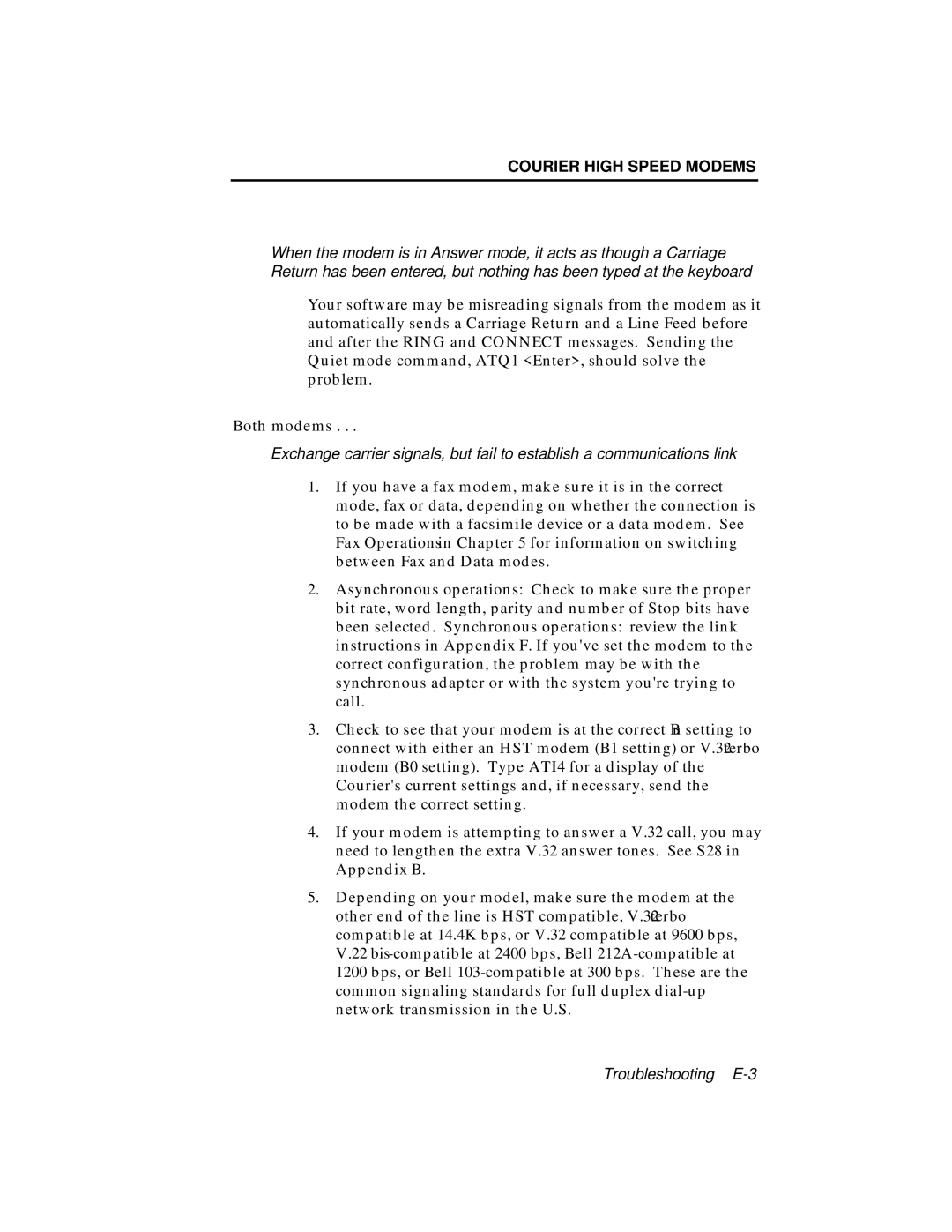COURIER HIGH SPEED MODEMS
When the modem is in Answer mode, it acts as though a Carriage Return has been entered, but nothing has been typed at the keyboard
Your software may be misreading signals from the modem as it automatically sends a Carriage Return and a Line Feed before and after the RING and CONNECT messages. Sending the Quiet mode command, ATQ1 <Enter>, should solve the problem.
Both modems . . .
Exchange carrier signals, but fail to establish a communications link
1.If you have a fax modem, make sure it is in the correct mode, fax or data, depending on whether the connection is to be made with a facsimile device or a data modem. See Fax Operations in Chapter 5 for information on switching between Fax and Data modes.
2.Asynchronous operations: Check to make sure the proper bit rate, word length, parity and number of Stop bits have been selected. Synchronous operations: review the link instructions in Appendix F. If you've set the modem to the correct configuration, the problem may be with the synchronous adapter or with the system you're trying to call.
3.Check to see that your modem is at the correct Bn setting to connect with either an HST modem (B1 setting) or V.32 terbo modem (B0 setting). Type ATI4 for a display of the Courier's current settings and, if necessary, send the modem the correct setting.
4.If your modem is attempting to answer a V.32 call, you may need to lengthen the extra V.32 answer tones. See S28 in Appendix B.
5.Depending on your model, make sure the modem at the other end of the line is HST compatible, V.32 terbo compatible at 14.4K bps, or V.32 compatible at 9600 bps, V.22
